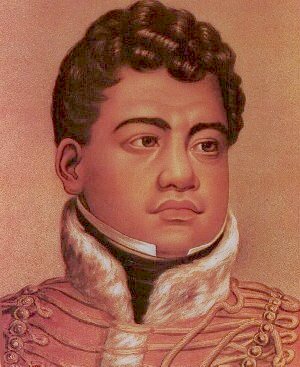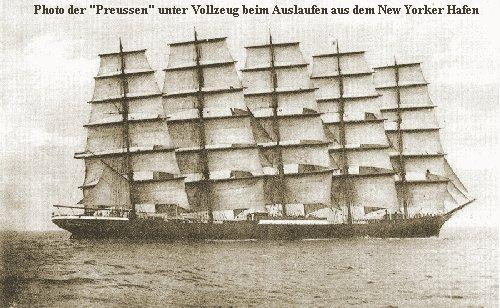|
Laysan
Laysan (; ) is one of the Northwestern Hawaiian Islands, located northwest of Honolulu. It has one land mass of , about in size. It is an atoll of sorts, although the land completely surrounds Laysan Lake, some above sea level, that has a salinity approximately three times greater than the ocean. Laysan's Hawaiian name, ''Kauō'', means "egg". It was mined for guano in the late 19th century and early 1900s, which resulted in the release of rabbits who had been brought in for food. After mining ceased, the rabbits ate up the natural vegetation causing a couple dozen plant and one bird species to go extinct. The rabbits were removed by 1923, and from then on until modern times it has been a nature reserve. The island is the home of the rarest duck in the world, the Laysan Duck. Geology Laysan is the second largest single landmass in the Northwestern Hawaiian Islands, after Sand Island at Midway Atoll. Laysan was created by coral growth and geologic upshift. The fringing reef ... [...More Info...] [...Related Items...] OR: [Wikipedia] [Google] [Baidu] |
Laysan Duck
The Laysan duck (''Anas laysanensis''), also known as the Laysan teal, is a dabbling duck endemic to the Hawaiian Islands. Fossil evidence reveals that Laysan ducks once lived across the entire archipelago, but today survive only on Laysan Island and two atolls. The duck has several physical and behavioral traits linked to the absence of ground-based predators in its habitat. By 1860, the ducks had disappeared from everywhere except Laysan Island. The introduction of European rabbits by guano miners at the end of the 19th century brought the bird to the brink of extinction in 1912, with twelve surviving individuals. Rabbits were eradicated from the island in 1923 and numbers of Laysan ducks began to rise, reaching 500 by the 1950s. In an effort to ensure the long-term future of this duck, 42 birds were translocated to Midway Atoll National Wildlife Refuge in 2002. These thrived in their new surroundings, and another group were later relocated to Kure Atoll. Taxonomy Named ... [...More Info...] [...Related Items...] OR: [Wikipedia] [Google] [Baidu] |
Laysan Finch
The Laysan finch (''Telespiza cantans'') is a species of Hawaiian honeycreeper, that is endemic to the Northwestern Hawaiian Islands. It is one of four remaining finch-billed Hawaiian honeycreepers and is closely related to the smaller Nihoa finch. The Laysan finch is named for Laysan, the island to which it was endemic on its discovery. It was subsequently introduced to a few other atolls, and its historical range included some of the main islands. Description The Laysan finch is a large honeycreeper with a heavy bill. Overall the male has yellow plumage with a whitish belly and a grey neck. The female is duller than the male, with brown streaking. It is almost impossible to confuse the Laysan finch with any other bird in the field as it is the only passerine species found on the few islands it lives on. Range and behavior Range On its discovery, the Laysan finch was an endemic resident of the small island of Laysan, along with the Laysan rail (''Porzana palmeri''), the L ... [...More Info...] [...Related Items...] OR: [Wikipedia] [Google] [Baidu] |
Northwestern Hawaiian Islands
The Northwestern Hawaiian Islands also known as the Leeward Hawaiian Islands, are a series of islands and atolls located northwest of Kauai and Niihau, Niihau in the Hawaiian Islands, Hawaiian island chain. Politically, these islands are part of Honolulu County, Hawaii, Honolulu County in the U.S. state of Hawaii, with the exception of Midway Atoll. Midway Atoll is a Territories of the United States, territory distinct from the State of Hawaii, and is classified as one of the United States Minor Outlying Islands. The United States Census Bureau designates this area, excluding Midway Atoll, as Census Tract 114.98 of Honolulu County. The total land area of these islands is 3.1075 square miles (8.048 km²). With the exception of Nihoa, all these islands lie north of the Tropic of Cancer, making them the only islands in Hawaii situated outside the tropics. The Northwestern Hawaiian Islands are part of the Papahānaumokuākea Marine National Monument, a globally significant marine cons ... [...More Info...] [...Related Items...] OR: [Wikipedia] [Google] [Baidu] |
Midway Atoll
Midway Atoll (colloquialism, colloquial: Midway Islands; ; ) is a atoll in the North Pacific Ocean. Midway Atoll is an insular area of the United States and is an Insular area#Unorganized unincorporated territories, unorganized and unincorporated territory. The largest island is Sand Island, which has housing and an airstrip. Immediately east of Sand Island, across the narrow Brooks Channel, is Eastern Island, which is uninhabited and no longer has any facilities. Forming a rough, incomplete circle around the two main islands and creating Midway Lagoon is Spit Island, a narrow reef. Roughly equidistant between North America and Asia, Midway is the only island in the Hawaiian Islands, Hawaiian Archipelago that is not part of the state of Hawaii. Unlike the other Hawaiian islands, Midway observes Samoa Time Zone, Samoa Time (UTC−11:00, i.e., eleven hours behind Coordinated Universal Time), which is one hour behind the time in the Hawaii–Aleutian Time Zone used in Hawaii. Fo ... [...More Info...] [...Related Items...] OR: [Wikipedia] [Google] [Baidu] |
Kingdom Of Hawaii
The Hawaiian Kingdom, also known as the Kingdom of Hawaiʻi (Hawaiian language, Hawaiian: [kɛ ɐwˈpuni həˈvɐjʔi]), was an Archipelagic state, archipelagic country from 1795 to 1893, which eventually encompassed all of the inhabited Hawaiian Islands. It was established in 1795 when Kamehameha I, then Aliʻi nui of Hawaii, conquered the islands of Oʻahu, Maui, Molokaʻi, and Lānaʻi, and unified them under one government. In 1810, the Hawaiian Islands were fully unified when the islands of Kauaʻi and Niʻihau voluntarily joined the Hawaiian Kingdom. Two major Dynasty, dynastic families ruled the kingdom, the House of Kamehameha and the House of Kalākaua. The kingdom subsequently gained diplomatic recognition from European powers and the United States. An influx of European and American explorers, traders, and whalers soon began arriving to the kingdom, introducing diseases such as syphilis, tuberculosis, smallpox, and measles, leading to the rapid decline of the Native H ... [...More Info...] [...Related Items...] OR: [Wikipedia] [Google] [Baidu] |
Hawaiian Islands
The Hawaiian Islands () are an archipelago of eight major volcanic islands, several atolls, and numerous smaller islets in the Pacific Ocean, North Pacific Ocean, extending some from the Hawaii (island), island of Hawaii in the south to northernmost Kure Atoll. Formerly called the Sandwich Islands by Europeans, the present name for the archipelago is derived from the name of its largest island, Hawaii. The archipelago sits on the Pacific Plate. The islands are exposed peaks of a great undersea mountain range known as the Hawaiian–Emperor seamount chain, formed by volcano, volcanic activity over the Hawaiian hotspot. The islands are about from the nearest continent and are part of the Polynesia subregion of Oceania. The U.S. state of Hawaii occupies the archipelago almost in its entirety (including the mostly uninhabited Northwestern Hawaiian Islands), with the sole exception of Midway Atoll (a United States Minor Outlying Island). Hawaii is the only U.S. state that is sit ... [...More Info...] [...Related Items...] OR: [Wikipedia] [Google] [Baidu] |
Salinity
Salinity () is the saltiness or amount of salt (chemistry), salt dissolved in a body of water, called saline water (see also soil salinity). It is usually measured in g/L or g/kg (grams of salt per liter/kilogram of water; the latter is dimensionless and equal to per mille, ‰). Salinity is an important factor in determining many aspects of the chemistry of natural waters and of biological processes within it, and is a state function, thermodynamic state variable that, along with temperature and pressure, governs physical characteristics like the density and heat capacity of the water. A contour line of constant salinity is called an ''isohaline'', or sometimes ''isohale''. Definitions Salinity in rivers, lakes, and the ocean is conceptually simple, but technically challenging to define and measure precisely. Conceptually the salinity is the quantity of dissolved salt content of the water. Salts are compounds like sodium chloride, magnesium sulfate, potassium nitrate, and sod ... [...More Info...] [...Related Items...] OR: [Wikipedia] [Google] [Baidu] |
Native Hawaiians
Native Hawaiians (also known as Indigenous Hawaiians, Kānaka Maoli, Aboriginal Hawaiians, or simply Hawaiians; , , , and ) are the Indigenous Polynesian people of the Hawaiian Islands. Hawaiʻi was settled at least 800 years ago by Polynesians who sailed from the Society Islands. The settlers gradually became detached from their homeland and developed a distinct Hawaiian culture and identity in their new home. They created new religious and cultural structures, in response to their new circumstances and to pass knowledge from one generation to the next. Hence, the Hawaiian religion focuses on ways to live and relate to the land and instills a sense of community. The Hawaiian Kingdom was formed in 1795, when Kamehameha the Great, of the then-independent island of Hawaiʻi, conquered the independent islands of Oʻahu, Maui, Molokaʻi, and Lānaʻi to form the kingdom. In 1810, Kauaʻi and Niʻihau joined the Kingdom, the last inhabited islands to do so. The Kingdom recei ... [...More Info...] [...Related Items...] OR: [Wikipedia] [Google] [Baidu] |
Iron-hulled Sailing Ship
Iron-hulled sailing ships represented the final evolution of sailing ships at the end of the age of sail. They were built to carry bulk cargo for long distances in the nineteenth and early twentieth centuries. They were the largest of merchant sailing ships, with three to five Mast (sailing), masts and square rig, square sails, as well as other sail plans. They carried lumber, guano, grain or ore between continents. Later examples had steel hulls. They are sometimes referred to as "windjammers" or "tall ships". Several survive, variously operating as school ships, museum ships, restaurant ships, and cruise ships. History Iron-hulled sailing ships were mainly built from the 1870s to 1900, when steamships began to outpace them economically, due to their ability to keep a schedule regardless of the wind. Steel hulls started to become common from 1885, providing an even greater strength to weight ratio. Even into the twentieth century, sailing ships could hold their own on ultra-long ... [...More Info...] [...Related Items...] OR: [Wikipedia] [Google] [Baidu] |







